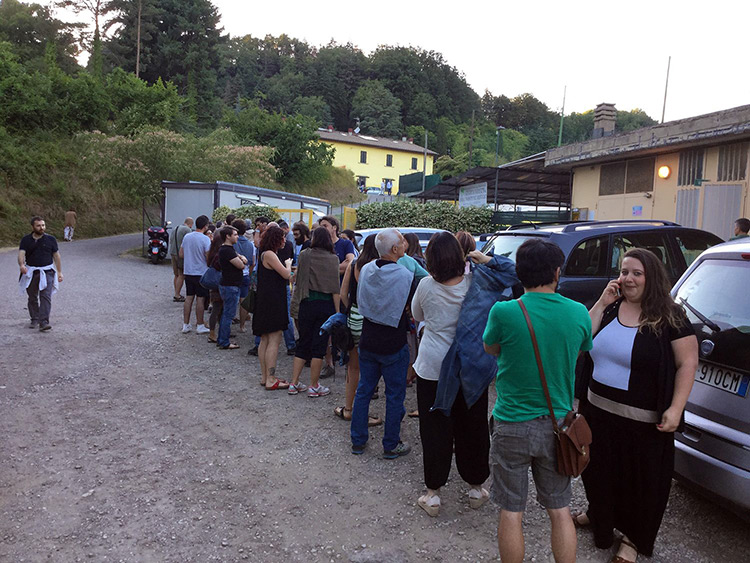How to order dishes, finding a table, waiting, eating
Well, you took your time studying the menu and finally you made your decision. You decided to take, say, two first courses, two second courses, side dishes, 1 liter red wine, 1 liter natural water, and two desserts. So, now it's time to order!
You have to queue and it may take a while to get to the cash, depending on the attendance. When it's your turn, you have to use all Italian words you may know, or try to communicate what you want pointing your finger to the dishes on the menu, because it's rather unlikely that the volunteer or the volunteers at the cash speak English. Anyway, it's not a big problem if you arrive at the cash desk with a clear idea of what you want!

The volunteer will then prepare the bill. You pay at that time and you'll be given a receipt with the dishes you chose. With this receipt, just enter the space where the tables are. This is usually near to the cash. In colder seasons it's usually indoor, like in a public hall, a community center, a large wood bungalow and so on. In warmer season, it's usually a vaste outdoor space, like a sports field, a meadow or a village square, maybe covered by a big tent.
Find a place to sit. Unlike restaurants, you may not have your own table. Infact in a sagra it's absolutely normal to accommodate to long tables with benches, or anyway sharing the table with other people in an informal environment. This area is full of volunteer waiters and some of them should notice you and your receipt He or she will take your receipt and start bringing you the dishes, in the logical order: first wine and water, then appetizers, first courses etcetera. If it happens that after some minutes no one notices you, try to stop a waiter and show him or her your receipt. Waiters are usually the village's young people, so it's even possible to find someone who speaks a little of English. In some sagras, it's normal to wait for a long time to get the food… this again, because a sagra is not like a restaurant and no one usually is a professional restaurateur and in our experience, we've occasionally had to wait even for more than two hours to get all the dishes!
Another difference with a restaurant is that if you want something more, like another dish, a bottle of water or something else, you may have to queue again, as waiters usually can't take the money: they only bring the food to the tables. So it's a good idea to be sure of what you need before paying at the cash.
Some sagras do not provide dinners nor lunches, but only afternoon snacks (in Italian merenda). For instance, chestnut festivals, scheduled around October, provide usually only afternoon chestnuts' snacks, also because the October's climate in Tuscany does not recommend to stay outside during the evening. In our website we inform you about the opening times about every sagra we review.


